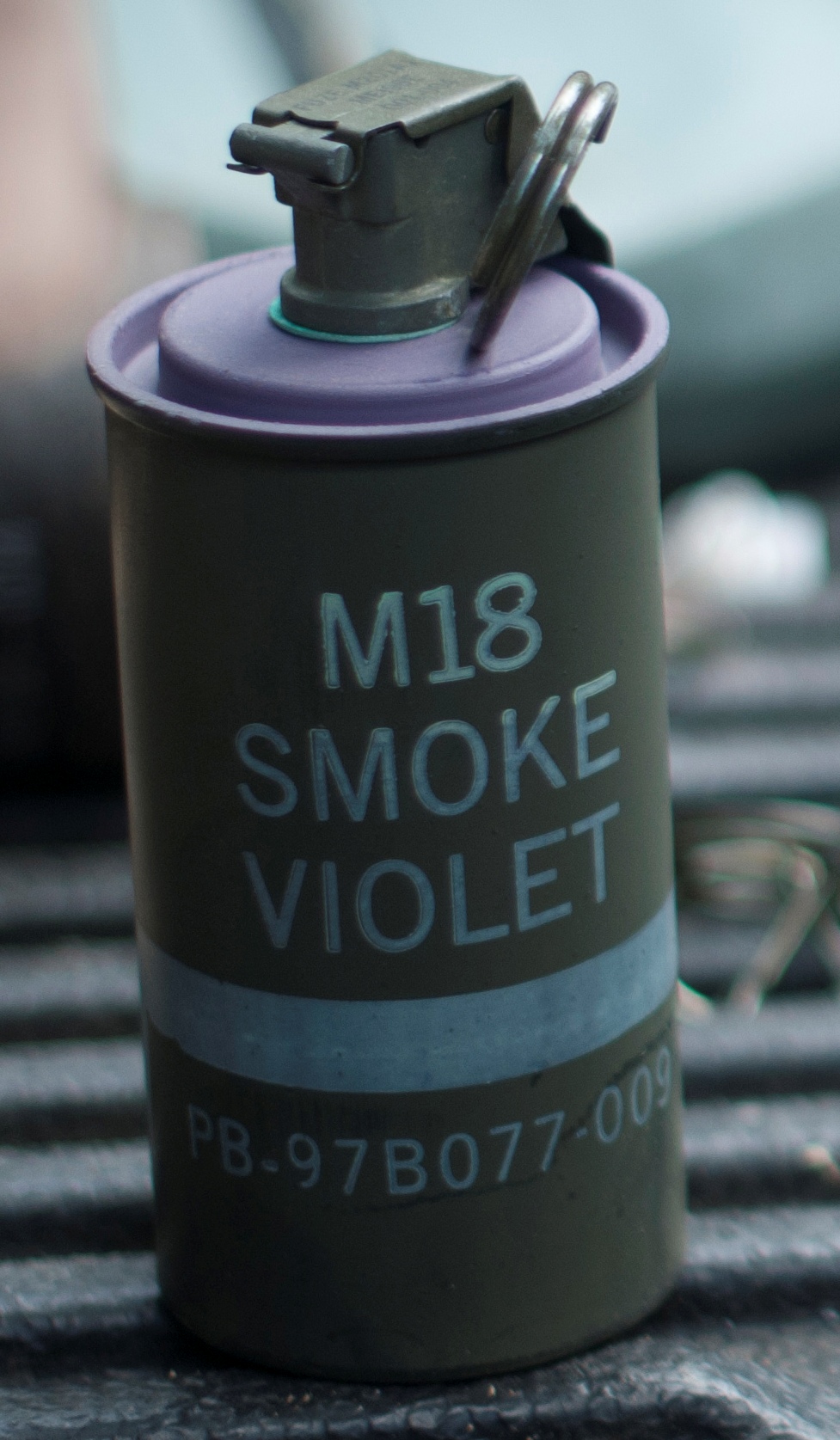AN M18 on:
[Wikipedia]
[Google]
[Amazon]


 The M18 Colored
The M18 Colored

 The M18 Colored
The M18 Colored Smoke Grenade
Smoke grenades used at demonstrations in Paris, 2008
upBritish L83A1 Smoke Grenade manufactured in May 2008. This grenade has already been used.
A smoke grenade is a canister-type grenade used as a signaling device, target or landing zone mark ...
is a US Army
The United States Army (USA) is the land service branch of the United States Armed Forces. It is one of the eight U.S. uniformed services, and is designated as the Army of the United States in the U.S. Constitution.Article II, section 2, cla ...
grenade used as a ground-to-ground or ground-to-air signaling device, a target or landing zone marking device, or a screening device for unit maneuvering.
History
The M18 was developed in 1942 duringWorld War II
World War II or the Second World War, often abbreviated as WWII or WW2, was a world war that lasted from 1939 to 1945. It involved the World War II by country, vast majority of the world's countries—including all of the great power ...
and was completed in November of that year. It was designed to replace the M16 smoke grenade, which did not burn as long or as vividly. It was designated standard issue in the fall of 1943. Both were produced at the same time as the M16 production lines were already setup when the M18 was adopted. The M16 was available in red, orange, yellow, green, blue, violet, and black. The M18 initially were going to be produced in the same colors, including white, but it was decided to limit it to four colors (red, yellow, green and violet) for simplicity. The M16 was declared limited standard in 1944 but was still available when it was declared obsolete in the early 1990s.
The violet-colored smoke grenade was used in-theater because of its vivid color; previously it was only used in the United States for training. Its smoke was more toxic than the other color mixtures and was removed from the inventory after the end of the Cold War in the 1990s.
The green-colored smoke grenade was still used in Southeast Asia because the jungle undergrowth was a different color and would still contrast with it. It was discovered that the green smoke drove away swarming bees.
When a ground element popped smoke to identify its location to aircraft, the aircraft was not told the color, but told to identify the color they saw. This prevented the VC/NVA if monitoring the frequency from popping smoke of the same color to confuse the aircraft. For additional security the colors were sometimes identified as cherry (red), lime (green), lemon or banana (yellow), or grape (violet).
Potential hazard
With both the white AN-M8 and colored M18 there is a danger of starting a fire if it is used in a dry area. Expended smoke grenade canisters remain hot for some time after burning out and should not be picked up bare-handed. The smoke is harmful if it is inhaled for prolonged periods; new smoke mixtures are under development that are less toxic. In enclosed spaces the smoke displaces oxygen and can cause respiratory or oxygen deprivation.Media Use
*The use of violet-colored M18 Smoke Grenades can be seen during the "Purple Haze
"Purple Haze" is a song written by Jimi Hendrix and released as the second single by the Jimi Hendrix Experience on March 17, 1967.
The song features his inventive guitar playing, which uses the signature Hendrix chord and a mix of blues and Ea ...
" scene, in the film ''Apocalypse Now
''Apocalypse Now'' is a 1979 American epic war film produced and directed by Francis Ford Coppola. The screenplay, co-written by Coppola, John Milius and Michael Herr, is loosely based on the 1899 novella '' Heart of Darkness'' by Joseph ...
'' (1979).
See also
* United States hand grenadesReferences